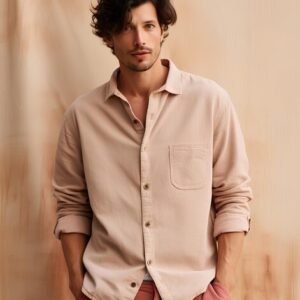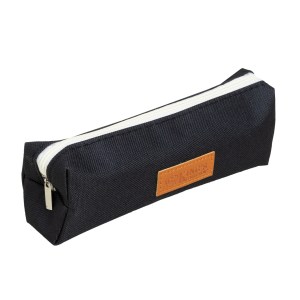Security guards play an essential role in maintaining safety and order, and one of the most visible aspects of their presence is their uniform. Whether in a shopping mall, corporate building, hotel, or outdoor event, security uniforms make guards instantly recognizable while reinforcing authority and professionalism.
But selecting the right security guard uniforms isn’t just about appearance. A well-designed uniform impacts comfort, efficiency, safety, and even the way the public perceives security staff. Businesses and security firms that carefully consider uniform choices will see stronger performance and improved trust from both employees and clients.
This guide explains the key factors to consider when choosing uniforms that are practical, professional, and aligned with your brand identity.
1. Comfort and Fit: The Foundation of Performance
Security guards often spend eight to twelve hours on duty, standing, walking, and responding to incidents. Without the right level of comfort, their focus and effectiveness can quickly decline. That’s why comfort and proper fit are the foundation of any good security uniform.
-
Breathable fabrics such as cotton blends or moisture-wicking materials help regulate body temperature in warm conditions.
-
Insulated fabrics or layered designs ensure warmth during colder months, particularly for guards assigned to outdoor posts.
-
Seasonal adjustments—lightweight shirts for summer and a windbreaker for security guards in winter—provide flexibility year-round.
A comfortable, well-fitting uniform doesn’t just keep guards physically at ease—it also supports alertness, mobility, and confidence.
2. Professional Appearance: Authority You Can See
The way security guards look directly influences how people respond to them. A neat, professional appearance signals discipline, authority, and reliability.
Uniforms should include:
-
Clean, tailored lines that look polished and intentional.
-
Coordinated colors that make guards stand out without appearing overly aggressive.
-
Security embroidered patches or emblems to clearly identify the role.
A professional look not only reassures employees and visitors but also discourages potential troublemakers. People are less likely to test boundaries when guards present visible authority.
3. Durability and Quality: Built to Last
Unlike office attire, security uniforms endure daily wear in demanding environments. From patrolling large facilities to working outdoors, uniforms must withstand constant use.
-
Durable fabrics such as ripstop or poly-cotton blends resist tearing and fraying.
-
Reinforced stitching strengthens seams and prevents uniforms from coming apart under stress.
-
Fade-resistant materials keep colors sharp even after repeated washing.
Though high-quality uniforms may require a higher initial investment, they reduce long-term costs by minimizing replacements. More importantly, they maintain a consistent, professional appearance over time.
4. Safety Features: Protecting Guards on the Job
Safety is a non-negotiable aspect of security work. A uniform can—and should—include features that enhance guard safety in different environments.
-
Reflective strips are essential for night shifts or low-light patrols, making guards visible to both pedestrians and vehicles.
-
Flame-resistant fabrics protect staff working in higher-risk settings such as factories or event venues with pyrotechnics.
-
Weatherproof jackets keep guards dry and warm, ensuring they remain effective in rain, wind, or snow.
When uniforms prioritize safety, employers not only protect their staff but also demonstrate accountability and professionalism to clients.
5. Functionality and Practicality
Uniforms should function as part of a guard’s toolkit. Security professionals carry radios, flashlights, notepads, and sometimes handcuffs or other equipment. Practical design ensures they have everything within reach.
Key features include:
-
Strategically placed pockets for easy access to essential gear.
-
Utility belts with secure pouches to organize tools.
-
Wrinkle-resistant, easy-care fabrics that save time on maintenance.
A functional uniform means guards can respond faster and stay organized, which is critical in high-pressure situations.
6. Role-Specific Uniforms: One Size Does Not Fit All
Not every security role has the same requirements. The uniform should reflect the responsibilities and setting of each guard.
-
Armed guards often need tactical-style uniforms with space for holsters and protective gear.
-
Corporate guards require formal designs that blend seamlessly into professional environments.
-
Event security benefits from highly visible uniforms that stand out in large crowds.
-
Retail guards may wear more discreet uniforms that allow them to observe without drawing unnecessary attention.
Customizing uniforms for specific roles ensures guards are prepared for their unique environments while maintaining a consistent team identity.
7. Accessories: The Finishing Touch
Accessories complete the uniform and contribute to both recognition and functionality.
-
Security embroidered patches or badges make guards easy to identify.
-
Caps or hats protect outdoor guards from sun and rain while improving visibility.
-
Belts with pouches keep equipment organized and accessible.
Well-chosen accessories help guards stay ready while enhancing their professional presence.
8. Brand Identity: Uniforms That Represent Your Business
A uniform is more than just clothing—it’s a reflection of the company behind the guard. Aligning uniforms with brand identity builds trust and strengthens recognition.
-
Hotels and corporate offices may opt for refined, formal uniforms that reflect elegance.
-
Industrial sites may require rugged, heavy-duty attire designed for durability.
-
Branded patches, logos, and color schemes tie the uniform to the organization’s identity.
When guards wear uniforms that reinforce company values, they become visible ambassadors of professionalism and safety.
Conclusion
The right security guard uniform is more than just an outfit—it’s a vital tool for safety, efficiency, and authority. By balancing comfort, durability, safety, practicality, and branding, businesses can equip their security teams to perform at their best.
A trusted Security Uniform Supplier like Pro Uniforms can provide tailored solutions that meet these needs. From breathable summer wear to tactical designs with safety features, the right uniforms prepare guards for every environment while enhancing professional presence.
In the security industry, presence is as important as performance. A uniform that combines practicality and authority sends a clear message: safety, discipline, and professionalism are always on duty.
FAQs About Security Guard Uniforms
1. Why are uniforms important for security guards?
Uniforms make guards instantly recognizable, project authority, and reassure people that safety is being managed. They also promote professionalism and brand identity.
2. What fabric is best for year-round use?
Poly-cotton blends are popular because they are breathable in summer, durable for daily use, and easy to maintain. Seasonal adjustments, like layering with jackets, add flexibility.
3. How do uniforms improve safety?
Features like reflective strips, flame-resistant fabrics, and weatherproof designs protect guards and make them more effective in various conditions.
4. Should uniforms differ by security role?
Yes. For example, corporate guards may need formal uniforms, while event or outdoor guards benefit from high-visibility gear. Role-specific designs improve performance.
5. How can uniforms reflect company branding?
Custom patches, logos, and coordinated colors align uniforms with a company’s identity, reinforcing trust and professionalism.



